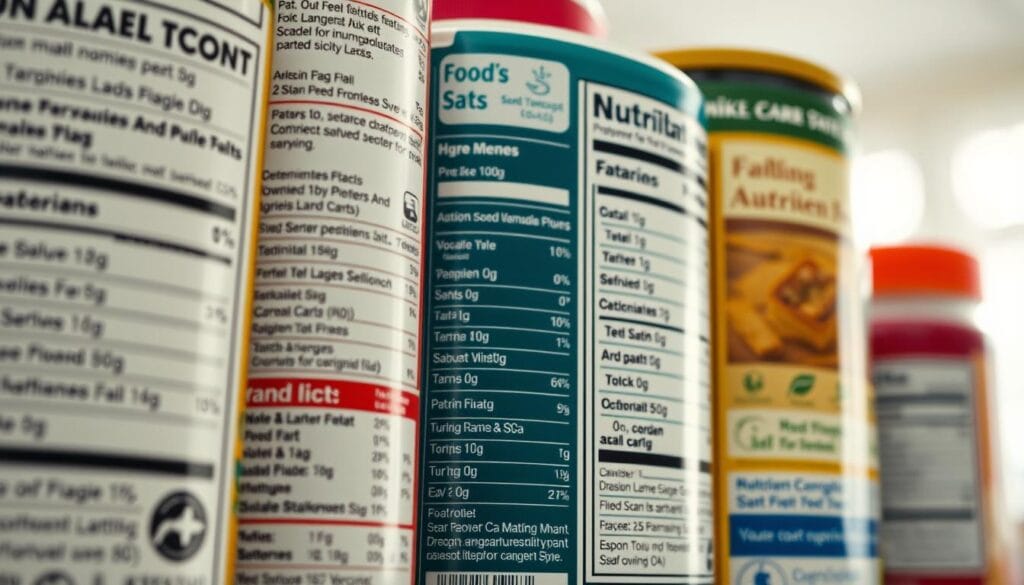Table of Contents
ToggleThe Hidden Risk of Vegan Meat: Navigating Soy Allergy in Plant-Based Products
Source: Communal Shower Thoughts: My beef with vegan meat (The Daily Northwestern)
In recent student reflections, “My beef with vegan meat” highlighted texture and taste issues—but few realize that plant-based proteins often hide common allergens like soy.
For millions with soy allergy, “vegan meat” can be an unexpected minefield. As plant-based diets gain steam, those allergic to soy face new challenges sourcing safe alternatives.
This post explores soy allergy’s background, medical insights, and practical tips, featuring how Food Scan Genius can help you scan labels for hidden soy in vegan meat.
Key Takeaways
- Soy allergy affects 0.4% of adults in the U.S., often triggering serious reactions.
- Many vegan meats rely on soy protein, pea protein, or wheat gluten substitutes.
- CDC and FARE offer guidance on managing soy allergy.
- Label-reading and apps like Food Scan Genius aid in identifying hidden soy ingredients.
- New research explores hypoallergenic plant-protein alternatives.
Background Context on Soy Allergy
Soy allergy ranks among the top 8 food allergies in the U.S. It often emerges in childhood but can persist into adulthood. Symptoms range from mild hives to life-threatening anaphylaxis.
Allergenic proteins in soy, such as Gly m 4, Gly m 5, and Gly m 6, can trigger immune responses. Even trace amounts may provoke reactions in highly sensitive individuals.
Plant-based meat substitutes typically use one of three main protein sources:
- Soy protein isolate
- Pea protein
- Wheat gluten
While pea and wheat alternatives exist, soy remains popular due to its complete amino acid profile and cost-effectiveness.
However, for those with soy allergy, this trend creates hidden risks in plant-based diets—and that’s the “beef” some have with vegan meat.
Medical and Scientific Explanation
Soy allergy arises when the immune system misidentifies soy proteins as harmful. This triggers IgE-mediated responses and the release of histamine.
Common symptoms include:
- Hives or rash
- Swelling of lips, tongue, or throat
- Gastrointestinal distress
- Respiratory challenges
- Anaphylaxis in severe cases
Diagnosis involves skin prick tests and measuring serum-specific IgE levels. The gold standard remains the double-blind, placebo-controlled food challenge under medical supervision.
According to NIH, up to 20% of children outgrow soy allergy by age 10, but persistent allergy occurs in many.
Comparing Common Meat Substitutes and Allergen Risks
| Protein Source | Allergen Risk | Nutrition Highlights | Common Brands |
|---|---|---|---|
| Soy Protein Isolate | High (soy allergy) | Complete protein, low fat | Beyond Meat, Impossible Burger |
| Pea Protein | Moderate (legume allergy possible) | Rich in iron, fiber | Ripple, Dr. Praeger’s |
| Wheat Gluten (Seitan) | High (gluten/wheat allergy) | High protein, low carb | Upton’s Naturals |
| Mycoprotein | Low (rare allergy) | High fiber, low fat | Quorn |
Impact on Individuals with Soy Allergy
As vegan meat popularity soars, soy-allergic consumers face exclusion from mainstream plant-based options. Social gatherings, cafeterias, and restaurants often lack soy-free substitutes.
Shopping becomes time-consuming. Many products list ambiguous “natural flavors” or “protein blend” without specifying sources.
Fear of accidental exposure can lead to anxiety and diminished quality of life. Studies show food-allergic individuals report higher stress and social isolation.
Schools and workplaces must adapt menus, requiring staff training on cross-contact prevention and emergency response protocols.
Practical Advice for Managing Soy Allergy
Effective soy allergy management hinges on three pillars: avoidance, preparedness, and education.
- Label Reading: Always check ingredient lists for “soy,” “hydrolyzed soy protein,” or “lecithin.”
- Use Technology: Install Food Scan Genius to scan barcodes and detect hidden soy in vegan meat and other products.
- Choose Certified Products: Look for “soy-free” labels or allergy-friendly certifications.
- Carry Emergency Medication: Always have an epinephrine auto-injector accessible.
- Communicate: Notify chefs and food preparers about your allergy to prevent cross-contact.
- Plan:** Pack safe snacks when traveling or attending events.
Related Food Allergy Research and Developments
Researchers are exploring hypoallergenic soy strains by genetically removing allergenic epitopes. Early trials show promise in reducing IgE-binding capacity.
Alternative proteins are also under development:
- Chickpea protein isolates—lower allergen risk, high protein.
- Fava bean protein—rich in essential amino acids.
- Fermented fungal proteins—minimal cross-reactivity with common allergens.
Clinical studies on immunotherapy for soy allergy are ongoing, aiming to desensitize patients through controlled soy protein exposure.
Industry collaborations between food scientists and allergists will be key to safer plant-based innovations.
Resources and Support Options
- CDC: Food Allergy Basics
- Food Allergy Research & Education (FARE)
- Mayo Clinic: Soy Allergy Overview
- Allergy & Anaphylaxis Australia
Frequently Asked Questions
What causes a soy allergy?
Can adults develop soy allergy later in life?
Are all vegan meats made with soy?
How can I treat accidental soy exposure?
Is immunotherapy available for soy allergy?
Conclusion
Soy allergy presents a hidden challenge in the rise of vegan meat products. By mastering label reading, leveraging Food Scan Genius, and staying informed on research, you can enjoy a safe, plant-based diet without compromising health.
Action steps: update your emergency plan, explore soy-free meat substitutes, and join support networks to stay empowered.
Related Posts
- Best Practices for Food Allergy Safety | Your Complete Guide
- 30 Of The Best Acts Of Delicious Compliance – AOL.com
- Need For Caution Over GMO Foods – Leadership Newspapers






4 Comments
Your comment is awaiting moderation.
[…] oil” are all peanut derivatives. Be cautious of terms you don’t recognize—when in doubt, research them or avoid the product […]
[…] of users around the world use Food Scan Genius to verify the vegan status of their food. Here are a few real-life […]
[…] diets can help avoid mammalian allergens, but it’s important to use food scanning apps to check for hidden animal-derived ingredients in processed […]
[…] Solutions: Her creative use of legumes and vegetables offers protein-rich meals without […]
[…] and Allergen-Friendly: Inulin and IPE are derived from plants and are generally free from common allergens like gluten, dairy, and […]